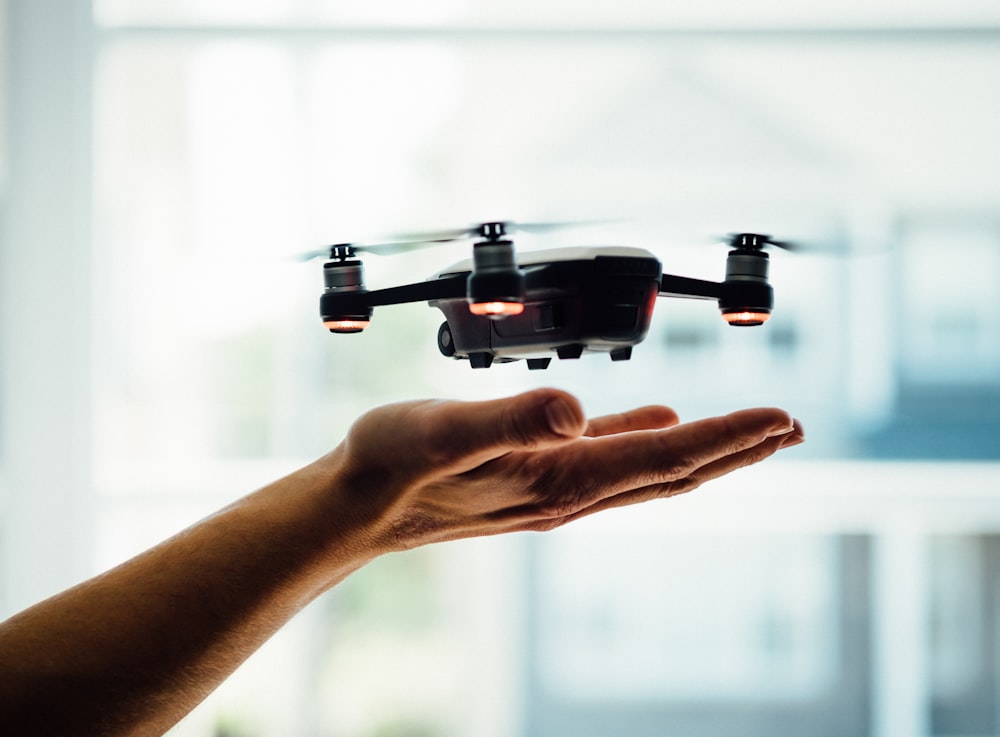From Europe To Mars, This $2.4 Billion Innovator Is Reaching Heights With Drones
Photo by Dose Media on Unsplash
A roughly one-hour drone flight can seem like a lifetime – especially for the leaders of Croatia, Hungry, and Romania , who recently had the unfortunate experience of witnessing an armed Russian drone fly over their countries.
Thankfully, no one was injured when the Soviet-era unmanned aerial vehicle (UAV) landed in Croatia.
But that flight became a literal call to arms as United States and North Atlantic Treaty Organization (NATO) defense officials huddled in frantic meetings, worried that more Russian drone strikes could lead to World War III.
While much of the war coverage has focused on fighter jets, missile attacks, and tank and troop movement, the Croatian incident underscores just how big of a role drones play on the modern battlefield.
The global military market for military drones is estimated at $98 billion, so there’s a lot of money on the line for drone developers who can provide the world with this much-needed technology.
And I’ve uncovered a savvy leader in unmanned aerial systems (UAS) that just posted 129% earnings gains and is crushing the market.
With a $2.4 billion market cap, it might be small – but this company’s UAS tech has massive potential that reaches all the way to space…
The Need for UAVs in Today’s Fight
The Soviet-era drone that crossed two NATO countries and crashed in Croatia is a significant concern for two reasons. First, it violated NATO airspace of three NATO countries.
Second, it had an explosive attached that detonated, which
can be viewed as a violation of Article 5 of the NATO charter stating that an attack on one member is an attack on all members.
That’s how easy it is to stoke the fires of WWIII.
And drones – or UAVs – have become absolutely essential to our defense.
From the NATO side , UAVs allow us to provide some tactical air support for reconnaissance as well as anti-tank weapons in theater. Training soldiers to fly UAVs is easier than supplying them with complicated equipment that has to be used by experts.
Removing piloted aircraft from more tactical missions empowers the soldiers on the ground and relieves some of the risks of losing lives and sophisticated, expensive equipment.
Plus – drones can be tracked by NATO and share intelligence with Ukraine on how effectively they’re being used, as well as where to use them next.
The “networked battlefield” has been in the making for decades, and UAVs are one solution that has yielded far more benefits than deficits.
A Pioneer in UAVs
That’s why drone specialist AeroVironment Inc. (AVAV) is such an exciting company right now.
AeroVironment’s roots in aviation innovation run deep, going all the way back to the Gossamer Condor that sits in the Smithsonian’s Air and Space Museum in Washington, DC.
The company launched the first human-powered airplane in 1977 before sending the first human-powered plane to cross the English Channel in 1979.
And these innovations have only accelerated over the decades.
After 9/11, AeroVironment shifted focus to UAVs and navigation systems for defense and aerospace work.
The company has since become a leading name in automated flight with an excellent reputation for creating tech that is reliable and durable.
During the resulting wars in Afghanistan and Iraq, AeroVironment’s UAVs were very popular with special forces and forward- deployed units for recon and intel work. When infantry would move into towns and villages, they would deploy AeroVironment UAVs to check the roads for IEDs or fly them down streets to make sure there wasn’t an ambush set up for them.
These UAVs have become increasingly popular in war zones because they’re easy to launch, relatively cheap (especially compared to planes and helicopters), very maneuverable, and best of all, unmanned.
Most of what AVAV has been working on for decades now is unmanned flight using various technologies. It specializes in micro- to medium-sized drones that can be used for ISR (intelligence, surveillance, reconnaissance) work, as well as solar- powered high-altitude UAVs that can sit for months over large or small areas.
And, of course, it also can weaponize some of the UAVs.
For example, AVAV recently received a huge order of its Switchblade 600 for use in Ukraine. It’s described as an extended-range loitering missile used to attack, disable, or destroy tanks and armored personnel vehicles.
This relatively small company is even taking its UAVs to new heights beyond the borders or our atmosphere…
Taking Drones to New Heights
AVAV also built the Mars Ingenuity Helicopter that has been flying around Mars. Its mission was scheduled for just a few short flights, assuming it wouldn’t stand up to the brutal conditions on the red planet. But it logged in dozens of missions.
There’s plenty of room to grow for AVAV with significant potential for the new space race as well as a growing footprint at the Pentagon.
We can see that in the numbers: Its funded backlog reflects the company’s order pipeline , which has continued to rise in recent quarters and currently sits at more than $226 million.
Add it all up, and you can see why the company recently reported quarterly earnings rose a stunning 129%. And it’s running rings around the S&P 500.
So far this year, the broad benchmark is off 6%, but AVAV is up more than 55%, with more gains on the way.
This is the kind of stock that can build wealth over the long haul.
But for new innovations in drones to continue, we’ll need computing power – and a lot of it. The kind of power that only a revolution in quantum computing can provide.
See disclaimers here.




